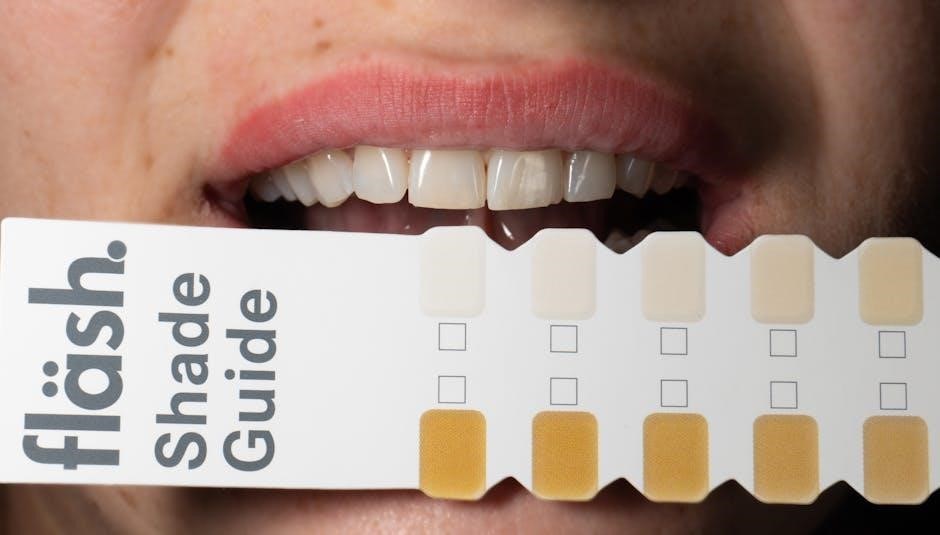Cake slicing is an art that ensures even portions and a clean presentation․ Whether it’s a wedding, party, or family gathering, proper slicing guarantees everyone enjoys a fair share of the treat․
Why Proper Cake Slicing Matters
Proper cake slicing ensures even portions, maintaining the cake’s structure, and prevents crumbling․ It guarantees a clean presentation, making every slice visually appealing․ Even cutting also helps in managing serving sizes, whether for intimate gatherings or large events․ Additionally, it reduces waste and stress, especially for tiered or intricately decorated cakes․ By mastering slicing techniques, you can deliver consistent, professional-looking results that impress guests and satisfy their expectations․
- Ensures fair and equal servings for everyone․
- Maintains the cake’s integrity and appearance․
- Reduces mess and stress during serving․
- Enhances the overall dining experience․
The Basics of Cake Serving Sizes
Cake serving sizes vary based on the event and portion preferences․ Event-style servings are smaller, ideal for large gatherings, while standard servings suit smaller groups․ Generous servings are perfect for special occasions․ A 6-inch round cake typically yields 8-10 slices, an 8-inch cake offers 12-16 slices, and a 10-inch cake provides 16-20 slices․ Understanding these sizes ensures you meet your guests’ expectations and avoid waste․ Proper sizing also helps maintain consistency, making your cake cutting process efficient and stress-free․
Tools and Equipment Needed
A sharp serrated knife, cake server, or offset spatula are essential for clean cuts․ Use a cutting board and hot water to maintain knife cleanliness for precise slicing․
The Best Knives for Cutting Cake
A long, thin serrated knife is ideal for cutting cakes cleanly․ The serrations help saw through gently, preventing the cake from tearing or crumbling․ For best results, use a gentle sawing motion and keep the knife sharp․ A sharp knife ensures even slices and maintains the cake’s structure; After each cut, wipe the knife clean with a damp cloth to remove crumbs and frosting, ensuring crisp, clean cuts every time․ This method works perfectly for round, tiered, or square cakes, making it a versatile tool for any cake slicing task․
Using a Cake Server or Offset Spatula
A cake server or offset spatula is essential for transferring slices neatly to plates․ After cutting, slide the server under the slice and gently lift it, ensuring the cake remains intact․ For tiered cakes, use the server to remove slices without damaging adjacent portions․ An offset spatula is particularly useful for serving flat or layered cakes, as it allows for smooth, even lifting․ Always wipe the server clean between uses to prevent crumbs and frosting from transferring to other slices, maintaining a clean presentation throughout serving․
Preparing the Cake for Slicing
Preparation is key to achieving clean, even slices․ Chilling the cake firms it up, making it easier to cut without crumbling or smudging frosting, ensuring precise cuts and neat presentation․
Chilling the Cake for Easier Cutting
Chilling the cake in the refrigerator for about an hour before slicing is highly recommended․ This step firms the texture, making it easier to handle and slice cleanly․ A cold cake reduces crumbling and helps maintain its structure, especially for moist or layered cakes․ Avoid freezing, as it hardens the cake too much, making it difficult to cut․ Once chilled, use a sharp serrated knife and a gentle sawing motion to achieve smooth, even slices․ This method ensures professional-looking results every time․
Removing Decorations Before Cutting
Before slicing, carefully remove all decorations such as candles, flowers, or edible ornaments․ Set them aside for later use or display․ This prevents decorations from getting damaged or interfering with clean cuts․ Gently lift or slide non-permanent decorations off the surface․ For attached items, use a sharp knife to carefully pry them loose without tearing the cake․ This step ensures smooth slicing and maintains the cake’s appearance․ Once removed, decorations can be placed back onto individual slices or the serving platter for presentation․ This makes the cutting process easier and more efficient․
Marking Slices for Even Portions
To achieve uniform slices, lightly mark the cake with a knife or spatula before cutting․ For round cakes, place the knife at the edge and gently score the surface, dividing it into equal sections․ Use the edge of your thumb to estimate even spacing, typically about one inch apart for event-style servings․ This technique ensures consistency and fairness, making every slice look professional and appealing․ Scoring helps guide precise cuts, preventing uneven portions and maintaining the cake’s structural integrity during serving․
Techniques for Cutting Different Cake Shapes
Mastering various cake shapes requires tailored techniques․ Round cakes benefit from radial slicing, while square cakes use grid methods․ Tiered cakes need layer-by-layer cutting, and sheet cakes are best portioned into uniform rows for consistent servings․
How to Slice Round Cakes Perfectly
For round cakes, start by chilling them to firm up the texture․ Use a serrated knife and a gentle sawing motion to prevent tearing․ Dip the knife in hot water, dry it, and slice evenly․ Mark the cake with light knife indentations to guide your cuts․ For uniform portions, cut in a radial pattern from the center outward․ Use a cake server or offset spatula to lift slices cleanly․ Wipe the knife between cuts to avoid crumbs and frosting buildup, ensuring crisp, professional-looking slices every time․
Mastering the Grid Method for Round Cakes
The grid method ensures even slicing for round cakes; Start by marking the cake’s center with a knife․ Divide the cake into equal sections by making vertical cuts from the center outward․ For smaller servings, cut each section into smaller slices․ Use a sharp serrated knife and a cake server for clean removal․ This method works best for standard 4-inch tall cakes, providing consistent portions․ Wipe the knife between cuts to avoid crumbs and ensure precise, uniform slices that look professional and satisfy every guest․ This technique is ideal for both events and home gatherings․
Cutting Tiered Cakes Like a Professional
Cutting tiered cakes requires precision and care․ Start by removing the top tier if it’s reserved for later․ For smaller tiers, cut from the top down while still stacked․ Use the cake supports (like dowels) as guides to avoid cutting too deeply․ For larger tiers, remove them and place on a cutting surface․ Always cut from the outside in, serving slices evenly․ Wipe the knife frequently to maintain clean cuts and prevent crumbs from transferring․ This method ensures a professional presentation and even distribution for all guests․
Understanding Serving Sizes
Mastering serving sizes ensures every guest gets the perfect portion․ Event-style servings are ideal for large gatherings, while standard and generous sizes cater to smaller groups or special occasions․
Event-Style Servings for Large Gatherings
Event-style servings are perfect for weddings and large events, offering smaller, manageable slices․ These portions are typically 4 inches tall, 2 inches wide, and 1 inch thick, ensuring everyone gets a fair share․ To achieve this, cut the cake into a grid pattern, creating equal-sized slices․ For a standard 4-inch tall cake, start by cutting 1-inch marks around the edge․ Use a sharp serrated knife and a gentle sawing motion to avoid crushing the cake․ For taller cakes, this method ensures consistent serving sizes․ Keep the cake chilled before cutting for cleaner slices, and wipe the knife between cuts to maintain neatness․ For larger gatherings, this method maximizes the number of servings while keeping the process efficient․ It’s ideal for events where guests prefer a bite-sized treat after a meal, ensuring satisfaction without waste․ This approach also works well for tiered cakes, allowing seamless distribution across all tiers․ Remember, smaller slices mean more servings, making it perfect for crowds․ Always use a cake server or spatula to transfer slices neatly to plates․ For the best results, ensure the knife is sharp and the cake is firm but not frozen․ This method guarantees uniform portions, making it a go-to for professional bakers and home entertainers alike․
Standard Servings for Smaller Groups
Standard servings are ideal for smaller gatherings, offering a balanced portion size of approximately 4 inches tall, 3 inches wide, and 1 inch thick․ This size is perfect for groups of fewer than 30 guests, ensuring everyone enjoys a generous yet manageable slice․ To achieve this, cut the cake into a grid for larger cakes or wedges for smaller ones․ Use a sharp serrated knife and a gentle sawing motion to maintain the cake’s structure․ For best results, chill the cake beforehand and wipe the knife between cuts to ensure clean, even slices․ This method works well for both round and tiered cakes, providing consistent portions without waste․ It’s a practical choice for intimate celebrations or family dinners, ensuring each guest gets a fair share․ The standard serving size strikes a great balance between portion and presentation, making it a versatile option for various occasions․ Always use a cake server or spatula to transfer slices neatly to plates, maintaining a clean and professional appearance․ This approach guarantees satisfaction and ease, whether you’re serving a cozy family gathering or a small event․ The key is to maintain even cuts and a steady hand for perfect results every time․
Generous Servings for Special Occasions
Generous servings are perfect for special occasions where larger portions are desired․ Measuring approximately 4 inches tall, 4 inches wide, and 2 inches thick, these slices offer a hearty treat for guests․ Ideal for intimate gatherings or when dessert is the focal point, this size ensures satisfaction․ To achieve this, cut the cake into wider wedges or thicker slices, using a sharp serrated knife for clean cuts․ Chilling the cake beforehand helps maintain its structure, while wiping the knife between cuts prevents crumbs from accumulating․ This method is particularly popular for weddings and anniversaries, where a grand presentation is key․ Generous servings not only impress but also ensure that each guest leaves feeling indulged․ They are best suited for events with fewer guests, allowing everyone to enjoy a substantial piece of cake․ This approach balances flavor and presentation, making it a favorite for milestone celebrations․ By following these steps, you can create memorable desserts that leave a lasting impression․ The generous serving size is a thoughtful way to elevate any special occasion, ensuring every guest feels celebrated․ It’s a classic choice for those wanting to make a statement with their dessert․ Always use a cake server or spatula to transfer slices neatly, maintaining a clean and professional appearance․ This ensures that each serving is both visually appealing and delicious․ The generous portion is a testament to the joy of sharing a decadent treat, making it a timeless option for any grand event․ The key is to balance size with presentation, ensuring each slice is as beautiful as it is satisfying․ Generous servings truly make every occasion feel extraordinary․
Tips for Achieving Clean, Even Slices
For clean, even slices, chill the cake to firm it up, use a hot knife dipped in water, and wipe the blade between cuts to prevent crumbs from accumulating․ Avoid applying too much pressure, as this can distort the cake․ Instead, use a gentle sawing motion with a serrated knife․ Marking portion lines beforehand ensures uniformity, while a cake server or spatula helps transfer slices neatly․ These techniques guarantee professional-looking results every time․
Using the Hot Water Knife Method
Dip a sharp serrated knife into hot water, then dry it thoroughly before cutting․ The heat softens the frosting, allowing smooth, clean cuts․ Repeat this process for each slice to maintain precision and prevent crumbs from sticking to the blade․ This method is especially effective for moist or layered cakes, as it ensures even portions without tearing․ By keeping the knife warm and clean, you achieve professional-looking slices every time, making this technique ideal for both home bakers and professional chefs alike․
Wiping the Knife Between Cuts
Wiping the knife between cuts ensures clean, even slices․ After each cut, use a damp cloth to remove crumbs and frosting, then wipe it dry with a clean cloth․ This prevents residue from transferring to other slices and maintains sharp, precise cuts․ For moist cakes, this step is crucial to avoid tearing․ Regular wipedowns keep the knife clean, ensuring smooth, professional-looking slices every time․ This simple habit elevates the presentation and consistency of your cake cutting, making it a must for any baker or host․
Maintaining Cake Structure While Cutting
Maintaining the cake’s structure while cutting requires precision and care․ Start by ensuring the cake is cold, as this firms the layers and prevents crumbling․ Use a serrated knife with a gentle sawing motion, applying light pressure․ Avoid applying too much force, which can cause the cake to tear or collapse․ For tiered cakes, remove tiers one at a time and cut on a stable surface․ This method ensures each slice remains intact and visually appealing, preserving the cake’s integrity for a professional finish․
Handling Leftover Cake
Properly storing leftover cake ensures freshness․ Wrap slices tightly in plastic wrap or aluminum foil and refrigerate or freeze․ Use wax paper for extra protection․
Wrapping and Storing Sliced Cake
For freshness, wrap sliced cake tightly in plastic wrap or aluminum foil and refrigerate․ For longer storage, place slices in airtight containers and freeze․ Let thaw at room temperature before serving․ Chilling the cake before wrapping prevents sogginess․ Use wax paper between slices to avoid sticking․ Store in a cool, dry place to maintain texture and flavor․ Ensure no exposure to air or moisture․ Label and date stored cake for easy tracking․ Check for staleness or dryness before serving․ Proper storage keeps cake delicious for days or even weeks․
Freezing Cake for Later Use
Freezing cake is an excellent way to preserve freshness for future use․ Wrap tightly in plastic wrap or aluminum foil and place in a freezer-safe bag․ Store at 0°F for up to three months․ Label and date for easy identification․ Thaw frozen slices at room temperature or refrigerate overnight․ Avoid direct sunlight and moisture to prevent freezer burn․ Ensure cake is completely cooled before freezing to maintain structure․ This method is ideal for saving leftover cake without compromising taste or texture․ Proper freezing keeps cake fresh and ready for any occasion․
Mastering cake slicing ensures every occasion is memorable․ Use sharp tools, chill the cake, and maintain clean cuts for flawless results․ Perfect slicing is both art and skill, enhancing every celebration with precision and care․
Final Tips for Perfect Cake Slicing
For flawless cake slicing, always use a sharp serrated knife and a gentle sawing motion․ Chill the cake for firmer texture and cleaner cuts․ Wipe the knife between slices to avoid crumbs and frosting buildup․ Use the hot water method for smooth, even cuts—dip, dry, and slice․ Mark slices beforehand for consistency and fairness․ Store leftovers in an airtight container or freeze for later․ Practice makes perfect, so experiment with different techniques to find what works best for you and your cake creations․



































































